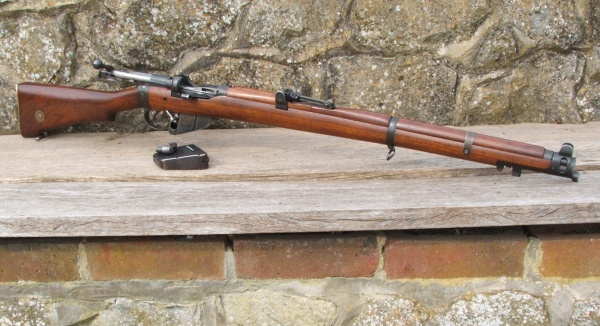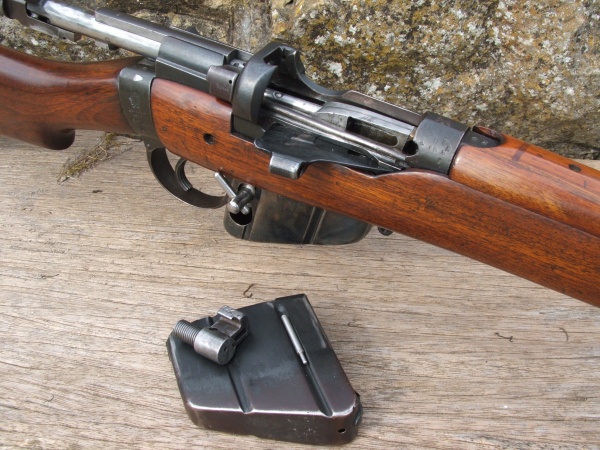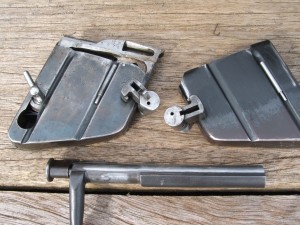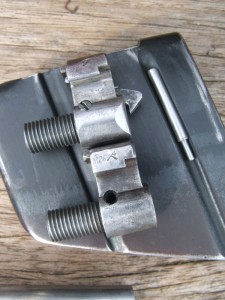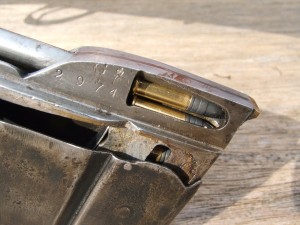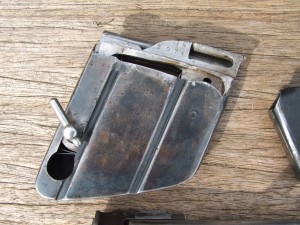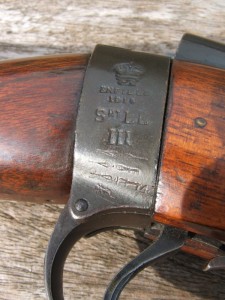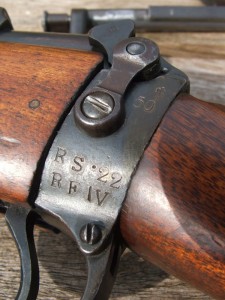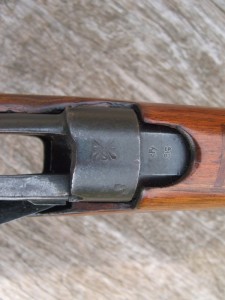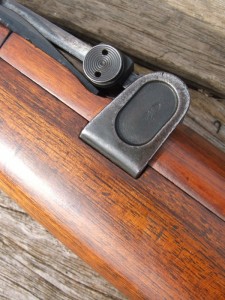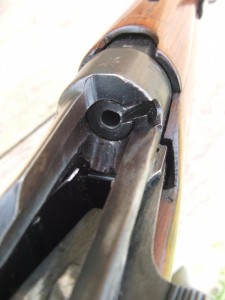S.M.L.E. .22 Rifle with Parker-Hiscock Magazine……SOLD
Created on April 24th 2013
Standard .303 SMLE converted to .22 Trainer
Serial Number H4686. Length 44.1/4″ Barrel length 25.3/8″ Full length stock and two piece hand-guard in excellent condition.
This rifle come with two magazines. The first is just and empty .3030 standard magazine with “.22” stamped on the RHS. The second is one of the rare and interesting Parker-Hiscock magazine conversions. So with the aforementioned magazine the rifle could only be used in single shot mode. With the Parker-Hiscock the rifle would act as a 5 shot repeater. To allow for this to function correctly there are two bolt heads and two firing pins.
The rifle itself is in fine order, it is in every way the same as the rifle the troops would eventually be issued with, except for the sub-caliber for training. The stock work is highly polished with minimal dents or dings. At the rear it has a brass butt-plate with trap for pull-through and oil bottle. The small tang of the brass butt-plate has a very clear “G” stamped onto it. In the stock behind the trap is the hole for both oil bottle and the smaller hole for the pull-through weight. On the RHS of the butt it has the brass ID disk with “K.C.S / 11” (Kings College School – One of the prime feeder schools for the Officer class during WW1 & 2)
The bolt matches the rifle with the serial number on the handle. On dismantling the bolt it is found that it has the two piece firing pin. It has the correct “D” shaped cocking piece and of course two bolt heads. The single shot bolt head is a normal rim-fire type with the off-set firing pin hole. The second bolt head, for use with the Hiscock magazine has a taper ground from the face to allow it to ride up over the mechanics of the magazine. The action still retains the conventional safety catch and the magazine cut-off. The receiver is marked with the clear WD “sold out of service mark” of to horizontal arrows pointing in on an “S”. “G.R.” crossed scepters on the LHS of the receiver and the serial number on the RHS. The wrist strap is marked thus; on the LHS the is an indistinct Enfield inspectors mark and over that make is a clear large “50”. On the underside of the same is the following; “R S . 22 / R F IV”. The other side of the strap is marked in the usual way with “Crown over G.R. / 1916 / Sht LE / III” The underneath that mark are six interesting symbols associated with War Department practices; Three rows of small marks that look like tennis rackets on their sides which are cancellation marks.
Conventional magazine release within the trigger guard. Standard two point sling swivels. A non standard thin metal strap attached to the top of the hand guard attributed to Fultons. Standard rear sights with windage, except for the addition of the 25 yard mark added to the graduations on the 300 yard point. The sights are protected by dished ear protectors mounted on the lower fore end. On inspection of the rear sights have had a previous number struck out and this rifles number added. Conventional nose cap incorporating bayonet fitting stud with serial number on it.
The Parker Hiscock magazine. All noted examples have be a “G” prefix as is this one; “G2974”. The magazine functions correctly. It has a side loading port where 5 cartridges can be loaded. To aid this there is a turn lever on the same side which alleviates the spring pressure from below. Once loaded the spring is released and allowed to push the rounds to the top of the magazine, it is then fixed into the rifle in the conventional manner. As the chamfered bolt moves forward, it pushes the steel pin on top of the magazine towards the base of the round and this in turn pushes the round into the chamber. At the moment the round is chambered the bolt acts upon the beveled top of the magazine and pushes it down and out of the way. The sprung loaded steel pin returns to its point of rest and the magazine spring pushes another round into the ready position. The rifle is then fired and ejection occurs as usual. When the bolt is fully withdrawn the whole assembly within the magazine is then pushed up wards and into position, to go through the process again. This ingenious device is therefore offering the trainee soldier or cadet a very good simulation of repeating fire, on a sub-caliber rifle.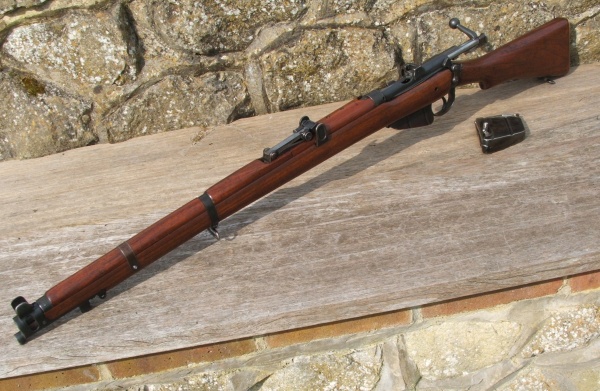
A very rare and interesting combination of rifle and magazine, with a good usable bore.
Stock No’ f337
£ 1695.
Comments Off on S.M.L.E. .22 Rifle with Parker-Hiscock Magazine……SOLD
